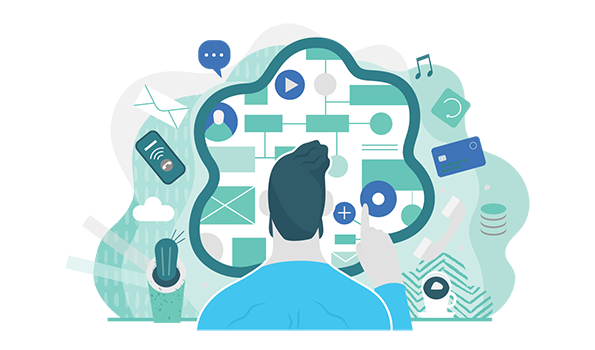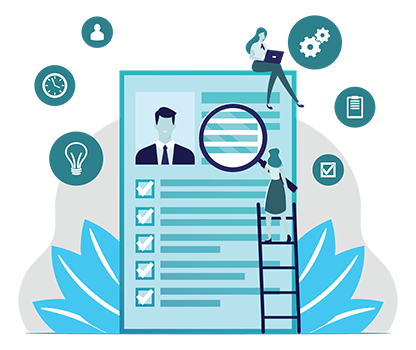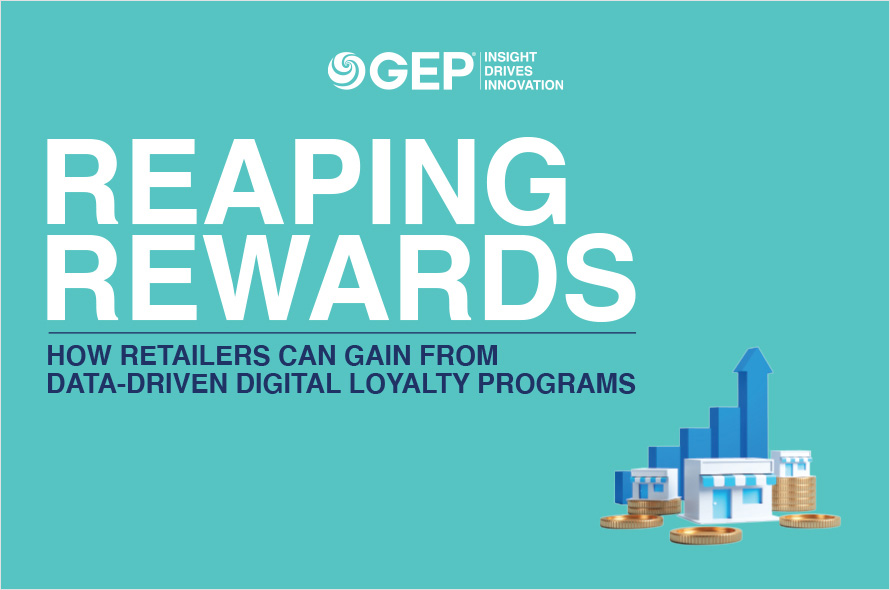What do your customers care about? What moves them to spend more?
If your rewards program isn’t digital, you’re in the dark. Don’t let legacy systems hold you back any longer.
A new paper, Reaping Rewards: How Retailers Can Gain From Data-Driven Loyalty Programs, outlines critical steps for today’s app-driven incentive programs. And it details how digital procurement is the bridge for digitalizing rewards that lead to more buying.
What’s Inside:
- Digging deep into data surrounding customer behavior
- Should you partner with an external rewards program?
- The impact of digitalization on brand perception
The paper is a must-read for retail procurement leaders as they work with marketing to drive digital incentive programs.
Marketing leaders in all industries must be prepared to answer many complex questions about growth and success. Who are our customers and what do they care about? How are customers engaging with us? How do we reach new customers? What will keep customers loyal? How can we increase the level of product personalization?
Customer loyalty and rewards programs should be providing data-driven answers to these However, legacy loyalty programs make data sharing challenging and inconsistent at best.
The good news: Today’s digital data mining and predictive analysis tools, when utilized, can offer a look into past transactions and a peek at what consumers are likely to buy next.
What lessons can be learned from digital rewards adopters? Success must be an enterprise-wide effort, with procurement the critical bridge that facilitates a competitive process while ensuring that business objectives are both met and bringing greater value.
THE BATTLE FOR CUSTOMER LOYALTY GOES DIGITAL

The first step in revamping your rewards program is to recognize that the landscape is shifting primarily to online and mobile apps; digital-centric incentive programs are the new battleground. From 2020 to 2025, loyalty programs’ global market size is expected to grow from $194B to $223B (2-4% CAGR), with the overwhelming majority of growth coming from digital rewards offerings. As a subset, the digital cashback industry is expected to grow 3-5% CAGR or $123B to $150B due to its rapidly rising popularity with consumers.1
As digital rewards programs become the norm, enterprises are positioned to identify customer acquisition and retention trends quickly. Restaurants, retail, big tech and telecom are among the industries currently taking advantage of digital-centric rewards platforms.
In the restaurant market, leading firms such as Starbucks and Chipotle have a growing base of loyal customers. They encourage more frequent visits by incentivizing their customers to earn discounts and points through spending on their mobile apps. McDonald’s and Burger King are currently testing similar programs.2
In the telecom industry, giants such as Verizon introduced a loyalty credit card for wireless customers in 2020, allowing users to earn rewards and redeem them to offset their monthly bill or in exchange for a new smartphone. T-Mobile partnered with Taco Bell to let customers redeem free tacos on Tuesdays using their mobile application.3
Retailers have followed suit, too, by pivoting away from providing coupons in their physical receipts. The prominent drugstore chain Walgreens recently launched its myWalgreens loyalty app as well as a new cashback credit card.4
When they aren’t implementing new loyalty programs directly, retailers are increasingly partnering with cashback and external rewards platform providers to attract new customers. With the use of cashback offers, advertisers have experienced a 3.4 times increase in conversions and a 46% increase in average order value.5 In 2020, over onethird of cashback companies in the U.S. saw increased website traffic.6
Given this success in customer engagement and loyalty, more enterprises will adopt these new models sooner rather than later.
Aside from consumer preferences, what is driving innovation? The growth of e-commerce is the primary influencer. More consumers are frequenting digital platforms instead of physical stores, which COVID-19 has accelerated. Beyond this, digital rewards programs offer cost and operational benefits. Perhaps most importantly, digital rewards programs provide a solution for advanced analytics needs.
GETTING TO TRULY KNOW YOUR CUSTOMERS

The ability to gather richer customer data is a key reason enterprises are shifting to digital rewards programs. Perhaps the biggest shortcoming of legacy loyalty programs is their inability to track customers through the reward and purchasing process. Printed coupons or discounts, for example, don’t necessarily target the right customer segments. They also present a barrier to spending, as customers must take additional steps before activating the offer. Even after a successful purchase or engagement, little is learned about the customer. Therefore, companies are slower to adapt to changes in preference and habits.
With the increased adoption of digital payments and engagement, enterprises can use digital rewards programs to better understand customer behavior — where they shop, how much they spend, what segments they belong to and more. In turn, this will enlighten organizations regarding customers’ perception of brands, what advertisements work, what product or service aspects are preferred and how customers are responding to real-time news and events that potentially influence buying habits.
This data provides fresh and meaningful insights, which will help enterprises react more quickly to trends, go to market faster, adapt their offerings to match demand and form more appropriate partnerships. Digital rewards programs address concerns that legacy programs struggle with — customer acquisition, churn, spending and more. Over time, businesses armed with this information will be more likely to engage with the right suppliers and partners as customer requirements become clearer.
Since digital cashback and rewards programs are closely related to customer experience, emerging technologies such as artificial intelligence (AI) and machine learning (ML) can further advance the industry. Advanced AI algorithms can predict customer behavior and influence customers’ purchasing patterns. They are also capable of monitoring multiple transactions as well as detecting and eliminating fraudsters. AI and ML offer intelligent insights that can enhance customer conversation and experience and overall sales.
REWARDS + COLLABORATION = SUCCESS
So how do marketing organizations begin implementing these new digital loyalty and rewards programs? It’s not as easy as simply calling a provider and rolling out the service.
More than 235 cashback companies are operating globally; 51 are based in the U.S. alone, with mergers and acquisitions complicating the landscape. Further, engagement models can differ depending on the reward type and method by which your customers activate a reward. The relationships between your company, the reward publisher, affiliate network, customer, and technology platform owner can vary drastically based on the partner.
With these factors and more impacting digital rewards programs, it’s vital for marketing to engage the procurement function early and collaborate on everything from market research to implementation. This will bring rigor to the sourcing process to ensure business objectives are met from both a quantitative and qualitative perspective. Procurement’s expertise automatically brings market intelligence to the table, on everything from understanding the current landscape and competitors to identifying new players in the space. They’re also aware of what peer companies are doing which can supplement, substantiate or even challenge the marketing team’s preconceived notions.
Procurement can also provide a holistic point of view when assessing digital rewards programs. While marketing focuses on the service level, procurement can address other considerations such as legal, IT, and finance early on in a formal strategic sourcing event.
Poor supplier relationships can derail new digital rewards programs or other marketing initiatives. Marketing must let procurement play the “bad cop” by being the one to hold each supplier accountable. Through supplier relationship management, procurement can help ensure that the original value identified through a contract is ultimately achieved. If variations in resources, support, or delivery occur, procurement can step in to reinforce these objectives while enabling marketing to maintain a good working relationship.
Ultimately, marketing drives value, while procurement helps to facilitate and monitor performance. This synergy creates additional value or savings, enabling leadership to reinvest or potentially reduce their bottom line.
CONCLUSION
The digital transformation of customer loyalty is already happening. Marketing teams must use this to their advantage by implementing modern rewards programs that are more responsive to consumers, more creative, and more forward-looking. The combination of this next-gen technology and strong internal partnerships with procurement will allow marketing leaders to meet the challenges of adapting to this new digital arena head-on.
- “2020 Global Cashback Report,” Cashback Industry News, 14 July 2020 | https://www.cashbackindustryreport.com/whats-inside.html
- Amelia Lucas, Burger King tests loyalty program as part of digital push,” CNBC.com, 9 February 2021 | https://www.cnbc.com/2021/02/09/burger-king-tests-loyalty-program-as-part-of-digital-push.html
- Alexandria White, “Verizon launched no-annual-fee Visa card with competitive rewards on groceries, gas and dining,” 18 March 2021 | https://www.cnbc.com/select/new-verizon-visa-card/
- Ben Miller, “Walgreens plans to launch credit and debit cards,” 13 January 2021 | https://www.bizjournals.com/chicago/news/2021/01/13/walgreens-to-launch-its-own-branded-credit-card-la.html
- “2020 Global Cashback Report,” Cashback Industry News, 14 July 2020 | https://www.cashbackindustryreport.com/whats-inside.html
- Ibid

